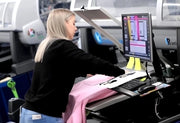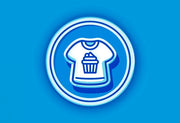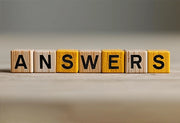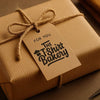🧵 How to Start a Clothing Brand in the UK (2025 Edition)
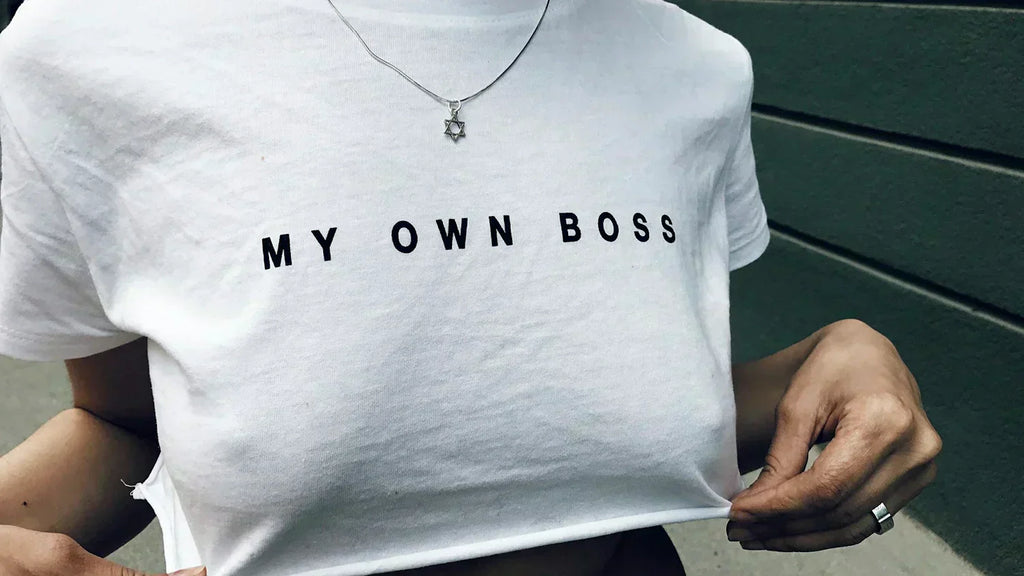
So, You’re Thinking About Starting Your Own Clothing Line?
Got an idea for a t-shirt that makes people stop, smile, or think? Maybe you’ve been sketching for months, or you simply want to see your slogan out in the world — either way, there’s never been a better time to launch a clothing brand in the UK.
Independent labels are thriving in the UK because the path from idea to customer is short. You can test a design this week, take pre-orders to fund the first batch, and restock from UK suppliers in days. That speed keeps cash risk low while you focus on fit, price, and consistent quality.
This guide takes you step-by-step through the process — from defining your niche and choosing the right blanks to getting your first custom t-shirts ready to sell. By the end, you’ll know exactly how to go from idea to launch with confidence and without unnecessary costs.
🔍 Step 1 — Define Your Brand
Before designing a single graphic or choosing a T-shirt blank, you need to pin down the core of your brand — what it stands for, who it’s for, and how it should look and sound. This is the foundation that will make every decision easier later on.
What’s Your Message?
Your brand message is more than a tagline—it’s the promise that defines you. It’s the distilled reason people remember your brand, emotionally connect with it, and keep coming back. A clear message sets the emotional tone and value of your brand, fueling loyalty and recognition.
Examples:
👟. For style-led streetwear fans, we make heavyweight, oversized tees with a luxury hand-feel and crisp prints, so every fit turns heads, holds shape, and becomes part of your signature look.
🌱. For ethical fashion fans, we make transparently sourced tees where every stitch tells a story—organic apparel, fair production, and prints that last—so your wardrobe says who you are, not just what you wear.
🎶. For outdoor festival lovers, we make sustainably sourced tees with bold, art-driven prints that turn heads from sunrise sets to midnight encores—pieces that carry the spirit of the festival experience long after the last track fades.
Who Are Your Customers?
Knowing who you serve is as important as what you sell. Insight into your target audience guides every strategic decision—from design and manufacturing to marketing and pricing.
Examples:
👟. Trend-driven streetwear collectors: 18–35, urban-minded, follow style drops and influencer collabs, gravitate toward oversized or boxy garments with a premium hand-feel, value limited runs and quality detailing—won’t buy if fabric feels cheap or branding looks dated.
🌱. Ethical fashion shoppers: 25–45, discerns supply chain transparency, follows conscious brands, expects certification or transparency—turns back if eco messaging feels hollow.
🎶. Festival adventurers: 20–35, outdoorsy, travels for summer events, seeks statement-making tees that hold graphic vibrancy through sun, sweat, and late-night wear—garments that feel like souvenirs from the experience itself.
Why it matters: Powerful messaging becomes emotional branding, creating a “brand pull” that’s felt in the gut, not just seen in specs.
What’s your style?
Your style is how your brand looks and sounds. Decide early so you stay consistent.
A clear message, a defined audience, and a consistent style are the building blocks of a brand people remember — and buy from. Nail these now, and every product choice, marketing campaign, and sales channel decision will feel more intentional. Think of this as your brand’s compass — it should guide you whether you’re creating your first single T-shirt run or expanding into a full seasonal collection.
👕 Step 2: Choose the Right Blanks
Not all T-shirts are created equal. The right blank should reflect your brand values (eco, premium, value), appeal to your audience’s preferred fit and size range, and work with your chosen print method. Get this right, and your pricing, product feel, and photography will all benefit.
Fit First, Then Fabric
Pick the cut and fit your customers actually wear — classic, relaxed, boxy, or women’s fitted. Confirm your starting size range and compare actual garment measurements, not just labels. Ringspun or combed cotton offers a smooth surface for detailed printing, while organic cotton adds eco credentials and a softer hand feel. Always order samples in key sizes and run a test print to check feel, drape, and colour accuracy before committing.
Quality Signals That Matter
Choose a blank brand that provides a wide range of colours, maintains regular stock, and offers matching accessories like hoodies, sweatshirts, and vests to create a cohesive line. If you’re unsure, order samples from different brands before committing to a larger order, or speak to a member of our expert team. Look for tight, consistent stitching and uniform dye across all garment types.

Popular Choices for UK Startups
- The Stanley Stella collection is perfect for sustainability-focused brands, with strong eco credentials. Their Rocker and Creator 2.0 lines are highly recommended premium organic options.
- Gildan is widely recognised and budget-friendly, making them a good choice for value-driven brands. Gildan Hammer and Softstyle are among their most popular picks.
- AWDis is renowned for its hoodies and relaxed-fit T-shirts. Affordable and made from better cotton with PETA vegan approval, they offer a strong middle ground between Stanley Stella and Gildan — ideal for streetwear brands and younger adult audiences.
Your blank is the foundation of your brand’s quality, style, and customer expectations. Choose one that matches your ethos and customer expectations so your first print looks and feels exactly as intended.
🎨 Step 3: Design Your Clothing
You don’t need to be a pro to get started — but you do need print-ready artwork that will look sharp on fabric. Follow our artwork guidelines or get design support if you need a hand turning your idea into production-ready files.
Top Tools for Clothing Design
Canva — Perfect for beginners or those on a tight budget. Canva’s drag-and-drop interface makes it easy to combine text, shapes, and images into a clean, printable design without any design background. You can start with its free templates and adapt them to match your brand colours and fonts. Just remember to export at the highest resolution (preferably in PNG with transparent background) for the best print results.
Adobe Illustrator — The go-to software for professional designers and serious brand builders. Illustrator creates vector graphics, meaning your designs can scale to any size without losing quality — ideal for sharp text, bold logos, and intricate illustrations. It’s more complex to learn, but if you want ultimate control over every line, colour, and curve, this is the industry standard.
Procreate — Designed for illustrators and artists working on an iPad, Procreate offers a natural drawing experience with a huge range of brushes and effects. It’s perfect for hand-drawn artwork, digital painting, or custom lettering. You can sketch directly on screen, build up layers, and export in high-resolution formats ready for printing.
AI-Generated Art — AI tools like Midjourney, Sora, and Adobe Firefly can be powerful for quickly generating style concepts, moodboards, and mockup-ready designs. They’re ideal for testing colour palettes, exploring new illustration styles, or getting inspiration before you commit to a final concept. The main drawback with AI art is resolution — most outputs aren’t large enough for high-quality printing. To solve this, run your chosen design through an AI upscaler to boost it to print-ready dimensions while preserving detail.
Design That Matches Your Message & Brand
Your designs should tie directly to your brand story and connect with the audience you want to reach — whether that’s minimalist streetwear, local club pride, or sustainable statement pieces. Keep colours, fonts, and style consistent so your first collection feels like a complete set, not a random mix. For more tips on creating eye-catching designs, see our guide to stand-out T-shirt printing.
🖨️ Step 4: Pick a Print Method
Choosing the right print method can make or break your final product. Factors like order size, fabric choice, colour detail, and durability all play a role. We offer DTG (Direct-to-Garment), DTF (Direct-to-Film), and HTV (Heat Transfer Vinyl) — each with unique strengths.
For eco-conscious creators, DTG printing with organic cotton T-shirts delivers top print quality, vibrant colour, and lasting results with minimal environmental impact. Best on cotton fabrics, it offers fine detail, soft-hand feel, and works for runs from one-off designs to 1,000 units without setup costs.
DTF printing works on a wide range of fabrics, including cotton blends and polyester sportswear. It produces bold colours and solid durability, making it ideal for workwear and vibrant designs. Suited for 10–500+ units, it’s a flexible choice for consistent results across multiple garment types.
HTV printing is perfect for personalisation like names, numbers, metallic or glitter effects, and reflective safety wear. It creates a clean, solid finish and is cost-effective for small runs or individual customisation, making it a go-to for sports shirts, team kits, and high-visibility workwear.
| Feature | DTG (Direct-to-Garment) | DTF (Direct-to-Film) | HTV (Heat Transfer Vinyl) |
|---|---|---|---|
| Best For | Full-colour designs, small–large runs, intricate detail | Versatile fabric printing, vibrant colours | Bold, blocky designs, sports numbers, names |
| Fabric Compatibility | Best on 100% cotton, esp. organic | Works on cotton, blends, polyesters | Most fabrics (check heat resistance) |
| Colour Range & Detail | Excellent detail & gradients | Strong colours, good detail | Limited colours & effects |
| Durability | ⭐⭐⭐⭐⭐ | ⭐⭐⭐⭐☆ | ⭐⭐⭐☆☆ |
| Eco Impact* | Low impact — water-based inks, minimal waste | Medium impact — uses PET film & adhesive | Low–medium impact — uses PVC or PU vinyl |
| Setup Cost | Low | Medium | Low |
| Order Size Suitability | 1–1,000 units | 10–500+ units | 1–250 units |
*Eco Impact: Based on materials used, ink type, and production waste.
Further Reading
The right print method comes down to your brand’s priorities — whether that’s detail, durability, eco impact, fabric range, or cost efficiency (How to Price Custom T-Shirts for Profit). By matching your design style and audience needs to the right technique, you’ll get garments that not only look great on day one but keep your customers happy for years to come.
📦 Step 5: Order Samples First
Skipping samples is one of the biggest mistakes new brands make. Your designs might look perfect on screen, but print, fabric, and fit can surprise you — and not always in a good way. Ordering samples gives you the chance to check the colours, detail, garment, feel, and sizing before you commit to a full run. Think of it as your quality insurance policy.
If your range includes more than T-shirts, test them too — custom hoodies, custom vests, or custom sweatshirts — so your whole collection is consistent in quality.
How to order through The T-Shirt Bakery:
1️⃣ Go to any product page and click the 'CUSTOMISE' button.
2️⃣ 'Upload your artwork', and 'choose placement'.
3️⃣ Select the sample 'size'.
4️⃣ Add any 'special instructions' for our print team in the 'notes box' at checkout.
💡 Time Management Tips:
Build in enough time for your samples to be printed, delivered, and reviewed. If you’re launching a brand, allow room for adjustments — you may want to refine your design, test different sizes, or order a second round. Good product development takes patience, and rushing this stage can cost you more in the long run.
Whether it’s your first tee or your hundredth hoodie, the sample stage is where great products are born. Take the time now, and your customers will thank you later — not just with compliments, but with repeat orders.
🛒 Step 6: Set Up Your Online Store
Your sales channels are the backbone of your brand. Start by deciding whether to run your own Shopify store — where you control the design, branding, and customer experience — or use marketplaces like Etsy, eBay, and Amazon to tap into ready-made audiences. Many successful sellers do both: drive loyal customers to their Shopify site while using marketplaces for wider reach.
Extend Your Reach with Social Selling
Once your core store is set, layer in social selling to meet customers where they already spend their time. TikTok Shop and TikTok Live are powerful for product demos, Facebook and Instagram Shops turn posts into instant purchases, and Google Merchant Centre helps your products appear in search shopping tabs. The trick is to keep your product listings consistent across platforms so customers recognise your brand wherever they shop.
Read 💰 How to Price Custom T-Shirts for Profit — it covers real-world examples for custom t-shirts, hoodies, and more, whether you use print-on-demand or bulk ordering.
Analytics and Social Insights
Once you’ve launched, use Shopify Analytics or marketplace dashboards, and social insights to track what’s selling, test promotions, and refine your strategy. Selling online isn’t a one-time job — it’s a cycle of testing, improving, and growing.
If you’re unsure where to start, our Warrington printing hub offers local advice, tech support, and setup help to get your online store live and making sales.
💡 Final Thoughts
Starting your own clothing brand isn’t about rushing to launch — it’s about building something worth wearing, worth sharing, and worth buying again. Every step you’ve taken in this guide — from finding your niche and sourcing the right blanks, to creating designs that tell your story, pricing them for profit, and choosing the right print method — lays the groundwork for a business that lasts.
The secret is in the details. Sampling before launch means you’ll never compromise on quality. Selling through the right mix of your own brand’s website, marketplaces, and social channels ensures you meet your customers where they already are. And keeping your listings consistent means they’ll recognise your brand instantly, whether they first see you on Instagram or in a TikTok feed.
Remember — launching is just the beginning. Use analytics to learn, test, and refine. Minor tweaks in design, pricing, or sales strategy can turn one-time buyers into loyal customers.
If you’re ready to get started, The T-Shirt Bakery is here with eco printing, design expertise, and print-tested apparel to bring your vision to life — so you can focus on growing your brand, one great product at a time.
🧵 T-Shirt Brand Launch FAQs
Practical answers to get your first products live with confidence — from blanks and print choices to pricing, sizing, and setup.
